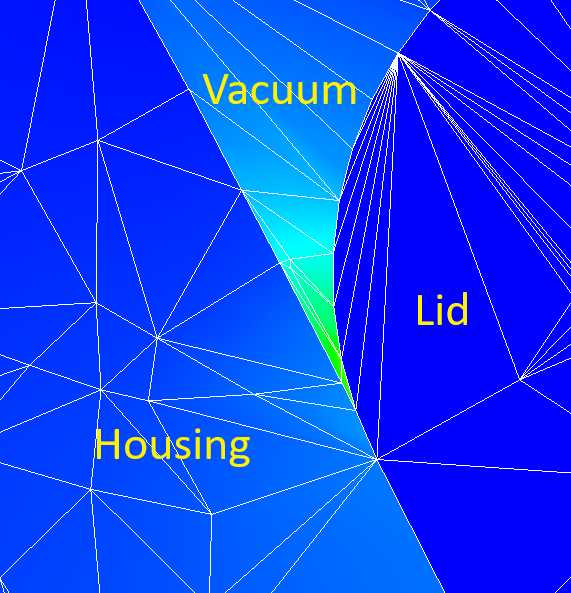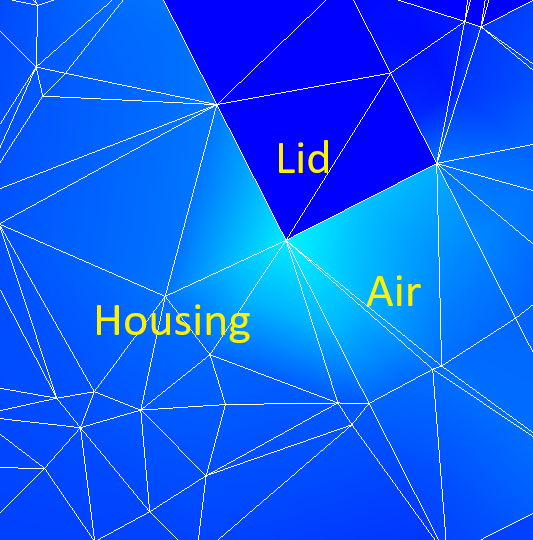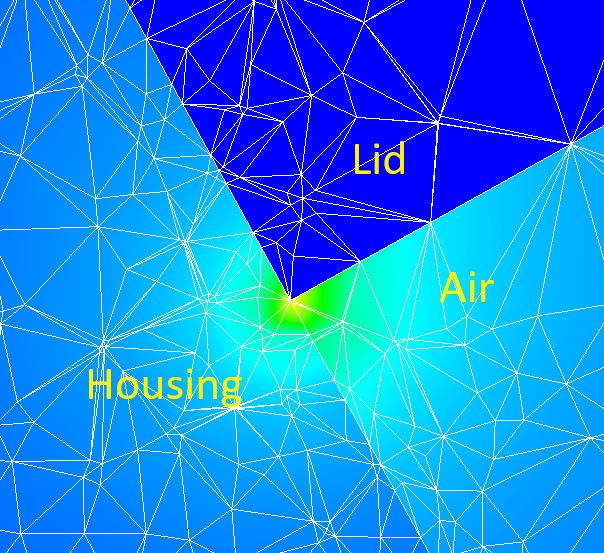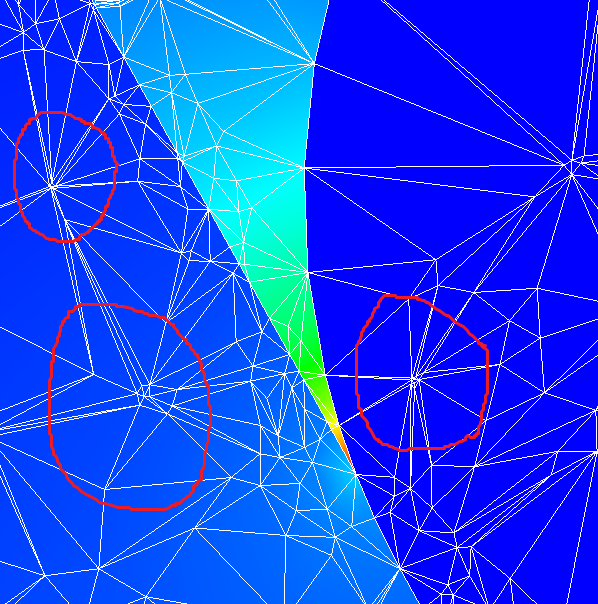TAGGED: ansysmesher, electric-field, mesh-refinement, Mesh-sensitivity, meshing
-
-
March 9, 2025 at 7:02 pm
sven.wolf
SubscriberI am simulating the electrical fields inside a vacuum-chamber in a electrostatic simulation where two opposing voltage-excitations are given. On the edge of the vacuum-chamber where the housing and the lid(metal) are coming together the results show high electrical fields in this tight space and also on the outer corner(see picture 1 and 2):
To investigate this further I put on a length-based mesh-refinement operation on the surface of the housing to refine the mesh in this area (see Picture 3 and 4) :
In this refined version the electrical field maxima are substantially higher (appr. 20%). Now my question is weither the more refined mesh really is showing the more realistic results or maybe I just multplied a field-artefact? From my point of view the higher the element-count in an area, the more the results are represanting the true values. Or can a too fine mesh also result in multiplying errors in the solution? Is this field-behaviour realistic?
One further question I have considering the mesh itself. I observe in all the meshes some areas where the mesh-elements seem to produce random "clusters". In this areas the elements are really not well formed (see Picture 5 or Picture 1 on the lid for example):
I have sawn this phenomena also very often in other simulations from other people and tutorials and the documentation. Maybe this is usual for the Maxwell-Mesher? I mean if the results are good I have no problem with that. But from my previous experience with other simulation-programs, the mesh-elements seemed to be more well formed. I am using the automatic mesh-method and alternative meshing-methods as fallback are enabled. Maybe there is some difference between the TAU and the Classic mesher?
Thank You!
-
March 10, 2025 at 12:07 pm
Timos
Ansys EmployeeHi,
Maxwell uses an adaptive analysis process to optimize the mesh. It starts with a coarse initial mesh, refines the mesh in areas of high error density, and iterates until selected parameters converge within a desired limit.In terms of field behavior, it's important to ensure that the mesh accurately represents the physical phenomena being simulated. A bad quality mesh can lead to incorrect results, and mesh independency is important to ensure that results do not change significantly with different fine meshesA more refined mesh can indeed provide more realistic results as it allows for a more precise description of field quantities. Each element in the mesh should occupy a region small enough for the field to be adequately interpolated from the nodal values. However, it's important to balance the mesh refinement with the available computing power and memory.
If you're experiencing issues with mesh quality, it may be beneficial to look into alternative meshing strategies or adjust the mesh refinement settings.
-
March 10, 2025 at 2:16 pm
sven.wolf
SubscriberThanks for the reply.
Right now I have no real problems with the mesh itself, but is there some other Ansys-tool where I could refine the mesh independent from Maxwell and than just import it into Maxwell? Maybe there are some more mesh-operations.
The question then would be, if Maxwell still could perform the adaptive mesh-refinement on the imported Mesh.
-
- You must be logged in to reply to this topic.


- How does Ansys Twin Builder implement different simulation steps for subcircuits
- Ansys-MATLAB Co-Simulation
- Compute near field simulation with current
- Ansys Resonance simulatioin error
- Double-sided LIM external circuit error
- Calculating E-field tangential to a 2D resonant structure on a sapphire chip

-
2778
-
965
-
841
-
599
-
591

© 2025 Copyright ANSYS, Inc. All rights reserved.










